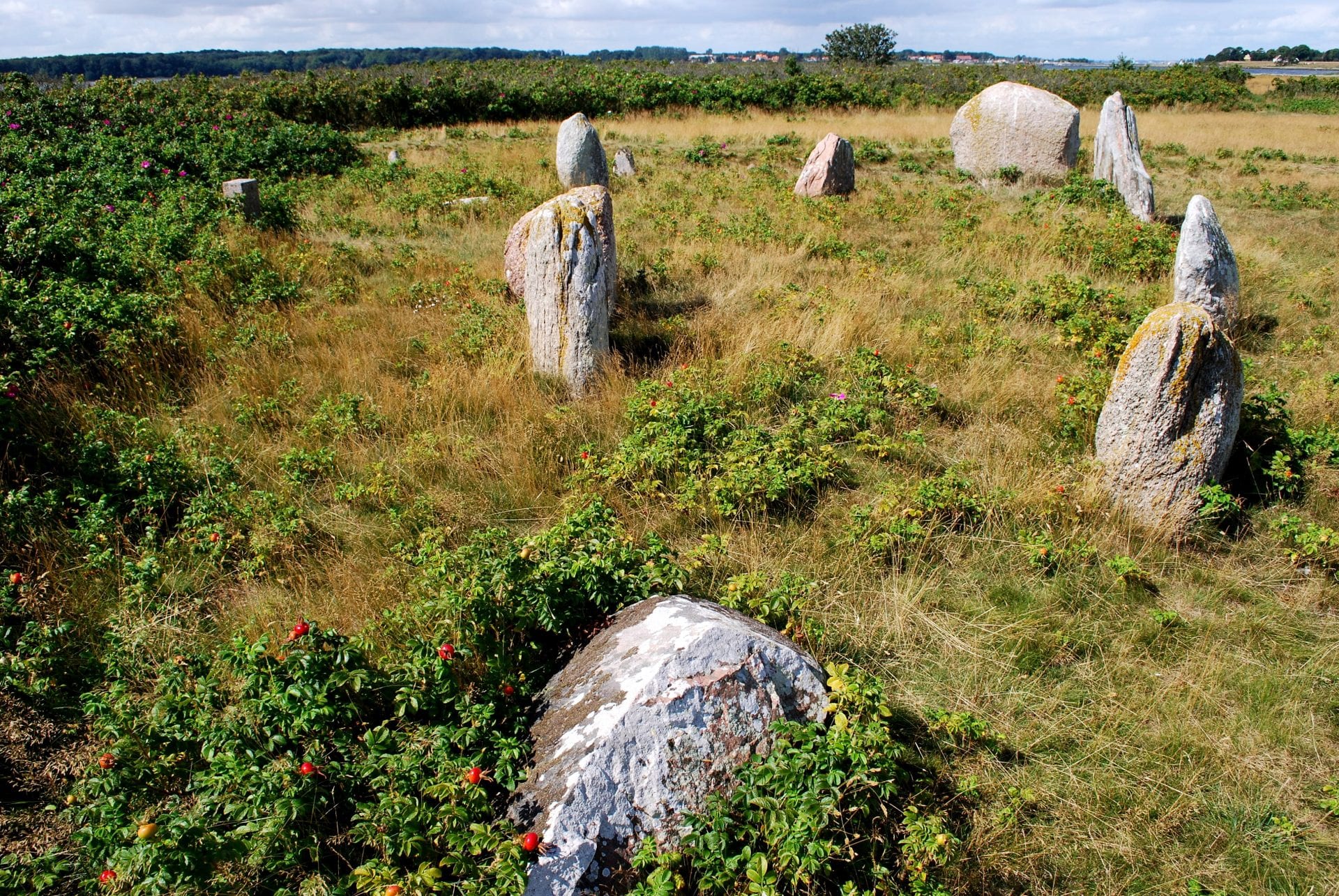A new study of the Kalvestene grave field on the island of Hjarnø, Denmark have identified two possible Viking ship settings, first suggested in a 17th century illustration.
The Kalvestene (meaning “the calf stones”) grave field consists of up to ten small stone settings shaped like a ship. Ship settings are suggested to be a religious symbol of the Vikings connection to the god Njord, who was represented as a ship or Skidbladnir that controlled wind and weather.
Previous archaeological evidence suggests that the multiple burials date from between AD 600 to 900, although according to legend the ship settings were constructed to commemorate a king named Hiarni who was crowned over his beautiful poetry.
The study was conducted by archaeologists from Flinders University, who were cross-referencing with an illustration of the site by the 17th century Danish antiquarian, Ole Worm.
Ole Worm’s drawings, which date from AD 1650 show over 20 ship settings (many of which no longer exist or were misinterpreted), for which archaeologists have identified two features from the illustration that may be new previously unexplored ship settings.
Dr Erin, lead author of the project from Flinders University said: “Our survey identified two new raised areas that could in fact be ship settings that align with Worm’s drawings from 1650. One appears to be a typical ship setting and the second remains ambiguous, but it’s impossible to know without excavation and further survey.”
Header Image Credit : Erik Christensen – CC BY-SA 3.0





